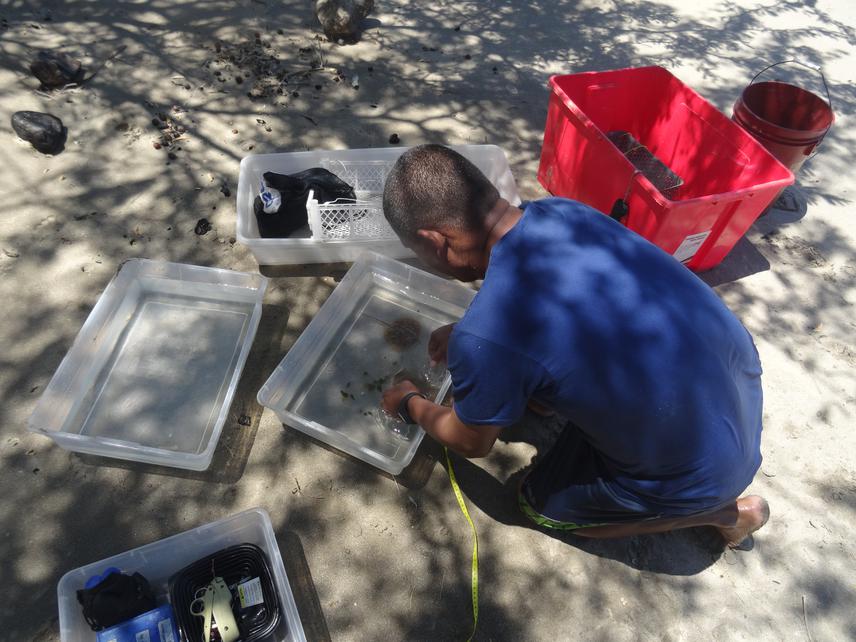Debbie Tatiana López Núñez
Main goal:
• Determine the population structure and the spatial ecology of batoids in the North Pacific of Costa Rica.
Specific objectives:
• Examine spatial and temporal patterns of abundance, diversity and biomass of the batoids present in El Jobo bay, North Pacific, Costa Rica
• Investigate the effects of environmental drivers (depth, temperature and chlorophyll) on the abundance, diversity and biomass of the rays in El Jobo bay.
• Determinate the residency, habitat use and movement patterns of Urotrygon chilensis in El Jobo bay using passive acoustic telemetry.
• Implement an environmental education program with the community of El Jobo (North Pacific of Costa Rica) to raise awareness the status of sharks and rays, current threats affecting their populations, and potential opportunities for their conservation and local economic development through sustainable tourism.

Population decline of sharks and rays has led many species to the brink of extinction. Batoids (rays, skates and guitarfish) are the most affected and least studied group. Knowledge gaps information on key aspects of batoids, including their biology, spatial distribution and habitat use, are lacking for most of the species, limiting their management and conservation actions.
This project will help lay the groundwork for the investigation of the batoids that inhabit the Costa Rican coasts, and thus gradually fill in the gaps in information on some species of batoids that are categorized as "Deficient Data" according to the IUCN Red List. Understanding the spatial and seasonal distribution, patterns of abundance, movement dynamics and habitat use of batoids from the North Pacific coasts of Costa Rica, will contribute to creating a more effective management plan, to protect and conserve both the batoids and the ecosystems where they live. We intend to involve the El Jobo community in the conservation and protection of the batoids of the bay, through active participation in environmental education meetings, ecotourism and volunteerism. Environmental education meetings will inform the community and the public of general aspects of batoids, with the aim of greatly reducing negative interactions between humans and batoids. One way is to encourage the local community to start snorkelling tours, to observe batoids in their natural habitat and using this as an economic alternative, since the bay of El Jobo has high levels of tourist activity due to the presence of a hotel of 5 stars. Establishing volunteer programs aimed at the El Jobo community is a way to actively involve the community and will also educate people on how to preserve important marine species, by opening a learning and sharing environment with conservation as the common ground.